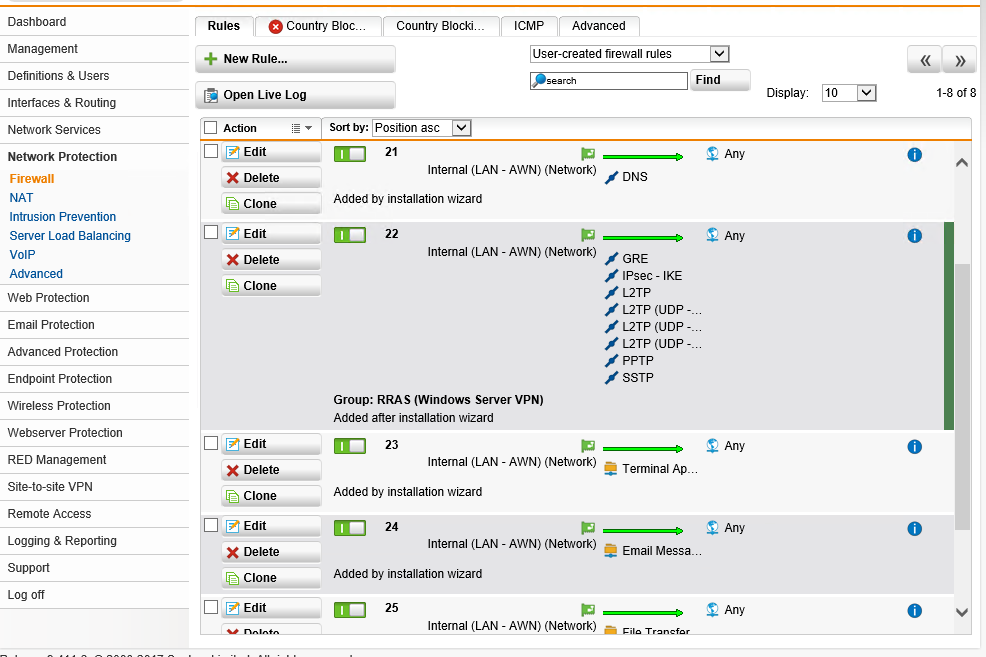
HOW TO CONFIGURE SOPHOS HOME AS PROXY UPDATE
HOW TO CONFIGURE SOPHOS HOME AS PROXY TRIAL
As long as your Sophos XG has internet access, it should be updated with new content whenever the Sophos team pushes any changes and/or updates.Sophos antivirus is an optional component and is not available for unregistered trial versions. The categories that the web policies use are updated from the Sophos cloud which is maintained by the Sophos team. That’s it! Hopefully this example gives you an idea as to how you can easily customize the web policy to fit your needs. Click ‘Save’ at the bottom and now open your desired firewall rule that this web policy will apply to and make sure it’s selected in the ‘Advanced’ section under ‘Web Policy’. The other two settings are fairly self explanatory but will be left unchecked for this example.ġ3. Leaving ‘Enable logging and reporting’ checked can be useful if you want to log traffic going through the web proxy and for reporting purposes. Click ‘Advanced Settings’ to gain access to some additional options. The Default Action will be left to ‘Allow HTTP’ (green shield icon with a white check mark) so everything not defined above is allowed.ġ2. Make sure the rule is turned on by clicking the icon under the ‘Status’ section that says ‘OFF’ which will turn it to ‘ON’.ġ1. For this example, we’ll leave it to ‘All the time’.ġ0. The ‘Constraints’ section allows you to define a specific time period when this web policy rule will be in effect. This allows you to define a different action for HTTPS traffic or just leave it set to ‘Use Action’ to use the same action as the HTTP traffic which in this case is to block.ĩ. There is also a second drop down under the ‘Action’ section just to the right that has a gray lock icon. The ‘Action’ section defaults to ‘Block HTTP’ (red shield icon with a white X). The ‘Users’ section can be left to ‘Anybody’ or as desired if you have users created in Sophos XG.Ĩ. After selecting the categories mentioned above, click ‘Apply 5 selected items’ to add these items to your web policy rule.ħ. Using this tool, you can type in your domain and click ‘Search’ to find which category it applies to.Ħ. Additionally, to determine which category a specific domain applies to, open the ‘URL Category Lookup’ tab on the ‘Diagnostics’ page. Note: To become familiar with what is contained in the various activities, categories or file types, click the appropriate tabs on the ‘Web’ page to view descriptions of each item. For this example, you can use the search text field to find the following:

Uncheck ‘ALLWebTraffic’ and now scroll through the list to add the specific activities, categories, URL groups or file types to your web policy rule. From this dialog, click ‘Add New Item’ and click ‘Show Only: …’ followed by ‘View all’ to be able to view everything that can be used in the web policy rule.ĥ. Place your cursor over ‘ALLWebTraffic’ and click to access the dialog to customize your new rule.Ĥ.

Click ‘Add Rule’ which will create a web policy rule below that applies to ‘ALLWebTraffic’. Provide a name for your policy and a brief description (optional).ģ. Open the ‘Policies’ tab on the ‘Web’ page and click ‘Add Policy’.Ģ. In this example, we’ll create a web policy for home use to block against advertisements, phishing, fraud, spam, spyware and malware.ġ. While Sophos XG comes with pre-defined web policies, they may not fit your needs as they’re more geared towards business or work place use. By setting it to ‘None’, the traffic will completely bypass the web proxy (assuming no other settings are enabled that still require the web proxy such as ‘Scan HTTP’). Some applications can have issues when its traffic is running through a web proxy even though nothing is being blocked which is where setting the web policy to ‘None’ becomes of use. With a web policy set to ‘Allow All’, the traffic is still being sent to the web proxy but everything is allowed to pass through. It’s important to note that setting a web policy to ‘None’ is not the same as ‘Allow All’. In other words, once traffic applies to a firewall rule, it will not be assessed against any other firewall rule. That is, if traffic applies to a firewall rule, whatever web policy is defined within that firewall rule will apply to that traffic even if it’s set to ‘None’. The policies are assigned to individual firewall rules and essentially follow the same logic. Using web policies allows you to control the type of web content clients on your network will have access to.


 0 kommentar(er)
0 kommentar(er)
